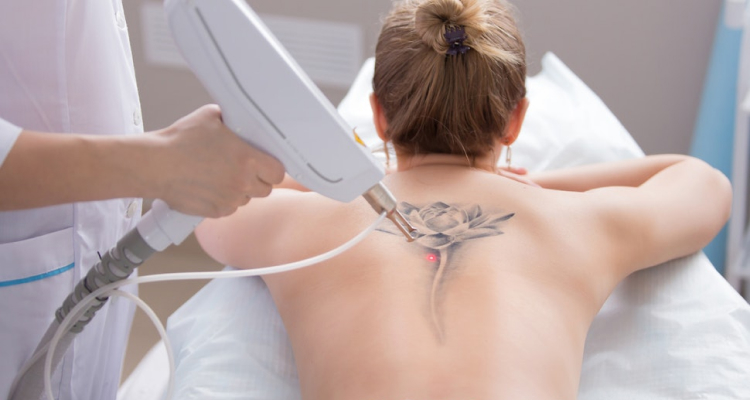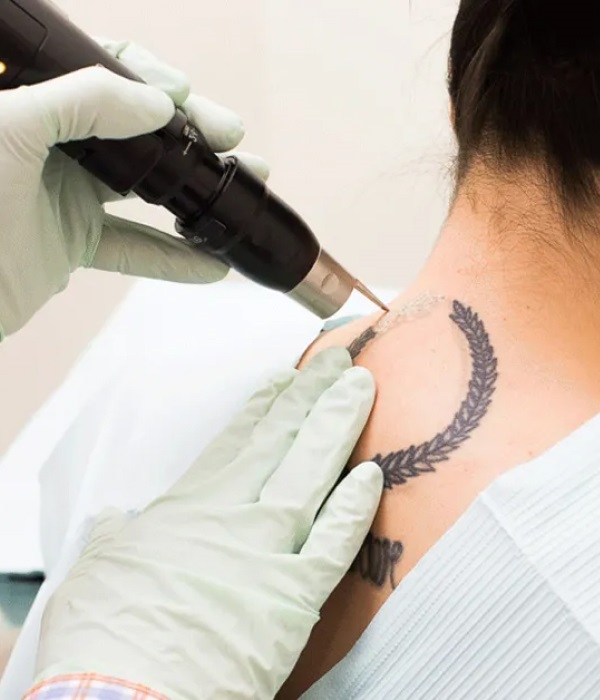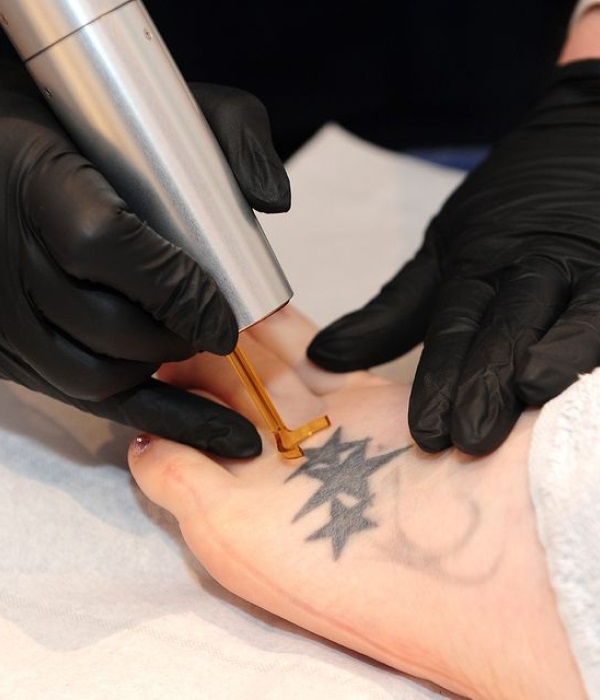
12 Important Facts About Laser Tattoo Removal
Posted on by Tattoo Expert
The need for tattoo removal has increased recently, which is indicative of a change in society toward a greater focus on individual preferences and aesthetics. Misconceptions about tattoo removal are common, despite this growing trend.
These misconceptions often obscure the important realities about the procedure, from inflated accounts of unbearable pain to irrational expectations of perfect skin after treatment. Therefore, before starting this life-changing process, it is essential to learn the facts about tattoo removal. People are better equipped to make judgments and move confidently and clearly along the road of skin reclamation when they are aware of the procedure’s complexities and reality.
1. How is the tattoo removal technique carried out?
Different methods are used to remove tattoos; all of them try to break up the permanent ink particles under your skin into pieces small enough for your body’s immune system to handle. By breaking up ink particles, specialist creams, and laser tattoo removal work with the least amount of scarring danger.
On the other hand, procedures like chemical peels, dermabrasion, and surgical excision require physically removing skin layers that retain tattoo pigment. Although these techniques encourage skin regrowth, scarring is often the outcome. Eventually, the idea is to let the skin recover itself, either by removing the ink or by letting the skin renew without the tattoo, but this may leave scars.
2. Does the Process Cause Pain?
The feeling that one has while getting rid of a tattoo differs according to the technique used. Some compare it to the feeling of getting a tattoo, while others say it feels like a rubber band snagging on skin. It’s typical for the skin to feel painful after surgery.
Surgeons may use general anesthesia, and dermatologists may inject or use topical or local anesthetics to reduce pain. By reducing discomfort throughout the process, these steps hope to make tattoo removal more pleasant for those having it done.
3. Who should have their tattoos removed?
Most people considering getting their tattoos removed are in excellent health, have never smoked, have reasonable expectations, and are aware of the possible dangers and side effects of the process. In addition to ensuring a qualified candidate, these requirements streamline the tattoo removal process.
4. What makes individuals get their tattoos removed?
The reasons for tattoo removal differ significantly from person to person. Dissatisfaction with the tattoo, job restrictions that forbid visible tattoos, and connections with painful events or people are common causes. These reasons lead a lot of people to have their tattoos removed, which allows them to start over and eases any emotional or professional baggage related to having undesired ink.
5. How can tattoos be erased?
There are many techniques used to remove tattoos, and they all use different approaches.
Various methods are employed for tattoo removal, each with distinct approaches.

1. Laser tattoo removal
The process of laser tattoo removal involves heating and shattering ink particles under the skin’s surface so that the body’s immune system can more easily remove them. Many sessions can be needed for total eradication.
Also See: Laser Tattoo Removal Side Effects
2. Dermabrasion
Dermabrasion is a surgical technique used to remove tattoo pigment-containing outer skin layers. It is often essential to provide anesthesia, and the treated region develops an open wound that needs to heal.
3. Chemical peels
When chemicals like trichloroacetic acid are applied to the skin, the outer layers of the skin peel off, removing the color from tattoos.
4. Surgical excision
This technique is good for minor tattoos as it entails cutting off the inked skin and then sewing the remaining skin back together.
5. Creams for removing tattoos
Although less effective, these creams provide a do-at-home alternative. They must be used often and for an extended period of time to show benefits since they contain acids that may irritate or harm skin.
Also See: 7 Best Tattoo Removal Creams To Buy
6. How can a laser remove a tattoo?
Seeking advice from a qualified medical professional is crucial prior to laser tattoo removal. In addition to evaluating the size, color, and depth of your tattoo, they will also look into its history. Prior to the process commencing, eye coverings are supplied.
The laser’s intensity is adjusted throughout the session based on how your skin reacts. After applying the handpiece to the tattooed region, laser light pulses are released to disintegrate the ink particles. The number of pulses will vary depending on the size of the tattoo; many sessions are often required for full removal.
To maximize recovery, post-treatment recommendations are given after each therapy. Frequent sessions result in incremental effects over time, lightening the tattoo progressively.
7. What is the reason for the need for many sessions for laser tattoo removal?
Laser tattoo removal requires many sessions since the ink is placed in layers during the tattooing process. Lasers break down ink pigment into little particles that the body eventually eliminates. The skin need time to heal between treatments, which lowers the risk of adverse effects including blistering, edema, or temporary skin discoloration.
Time between treatments also reduces the chance of permanent skin discoloration and superficial scarring, making tattoo removal safer and more effective.
8. How well will my tattoo be removed with laser tattoo removal?
Everybody’s experience with laser tattoo removal is different. In some circumstances, it may be possible to eliminate it completely; however, for others, it will not be possible. The effectiveness of removal is influenced by elements, including the tattoo’s color scheme and pigment depth.
Because they absorb more light than other hues, blue and black, for example, tend to react better to laser therapy. Deeper pigments may be difficult for lasers to reach, and some hues could be difficult to remove. The efficiency of tattoo removal treatments is improving despite these obstacles due to technological developments.
9. How long does tattoo removal take, and how can I locate a doctor who can perform it?
Start by speaking with your primary care physician, who may identify dermatologists or surgeons who specialize in tattoo removal if you’re looking for a competent medical professional. It is best to arrange meetings with these kinds of experts in order to discuss different removal alternatives and choose the best course of action for your circumstances.
Tattoo size, color, and placement are some of the variables that affect how long tattoo removal takes. A few minutes is all that laser tattoo removal takes; however, many hours can be needed for surgical excision. In particular, laser removal sometimes requires many sessions, with benefits usually being apparent after six to twelve visits or more.
10. After getting rid of my tattoos, how should I treat my skin?
After having a tattoo removed, carefully follow the post-procedure recommendations provided by your surgeon or healthcare professional. Using an ice pack as soon as therapy is finished may help reduce pain. It could also be necessary for you to use a topical antibiotic treatment and bandage the affected region to keep it safe.

The next day, don’t scrub the treated region while taking a shower. To protect the skin from UV rays, which may impede the healing process, use sunscreen before venturing outside. To avoid any scarring and to enable the skin to heal correctly, avoid picking at the area.
11. What problems might arise during the tattoo removal process?
As with any medical process, tattoo removal has certain risk and possible problems.
These might include:
- Disfigurement
- llnesses.
- Discoloration of the skin.
- Dermatitis or irritation.
- Affliction or unease.
It is not suggested that you try do-it-yourself removal at home since it might be dangerous and useless. Although removal in a spa or tattoo shop can seem safer, dangers still exist. Making an educated choice on the safest and most efficient tattoo removal treatment plan is made possible by seeing a trained dermatologist, who will ensure that your health is thoroughly assessed.
12. How Much Does Tattoo Removal With Laser Cost?
There is no set price for laser tattoo removal; instead, it is usually calculated per session. The price of a tattoo in the US varies from $200 to $500 for each treatment, depending on the size, intricacy of the color, and number of sessions needed. The competence of the clinic and its geographic location may have an impact on prices.
In summary, a thorough grasp of the complexity and reality of tattoo removal is necessary to effectively navigate this field. It is important to debunk myths and misunderstandings for those who are contemplating this life-changing experience. Although tattoo removal techniques provide encouraging outcomes, there are hazards and factors to take into account.
From laser treatments to surgical procedures, every strategy demands considerable thought and expert advice. People may make better judgments and achieve safer and more successful results by accepting the facts about tattoo removal. In the end, the process of taking back one’s skin entails not only rubbing off undesired ink but also cultivating a fresh sense of self-expression and confidence.







